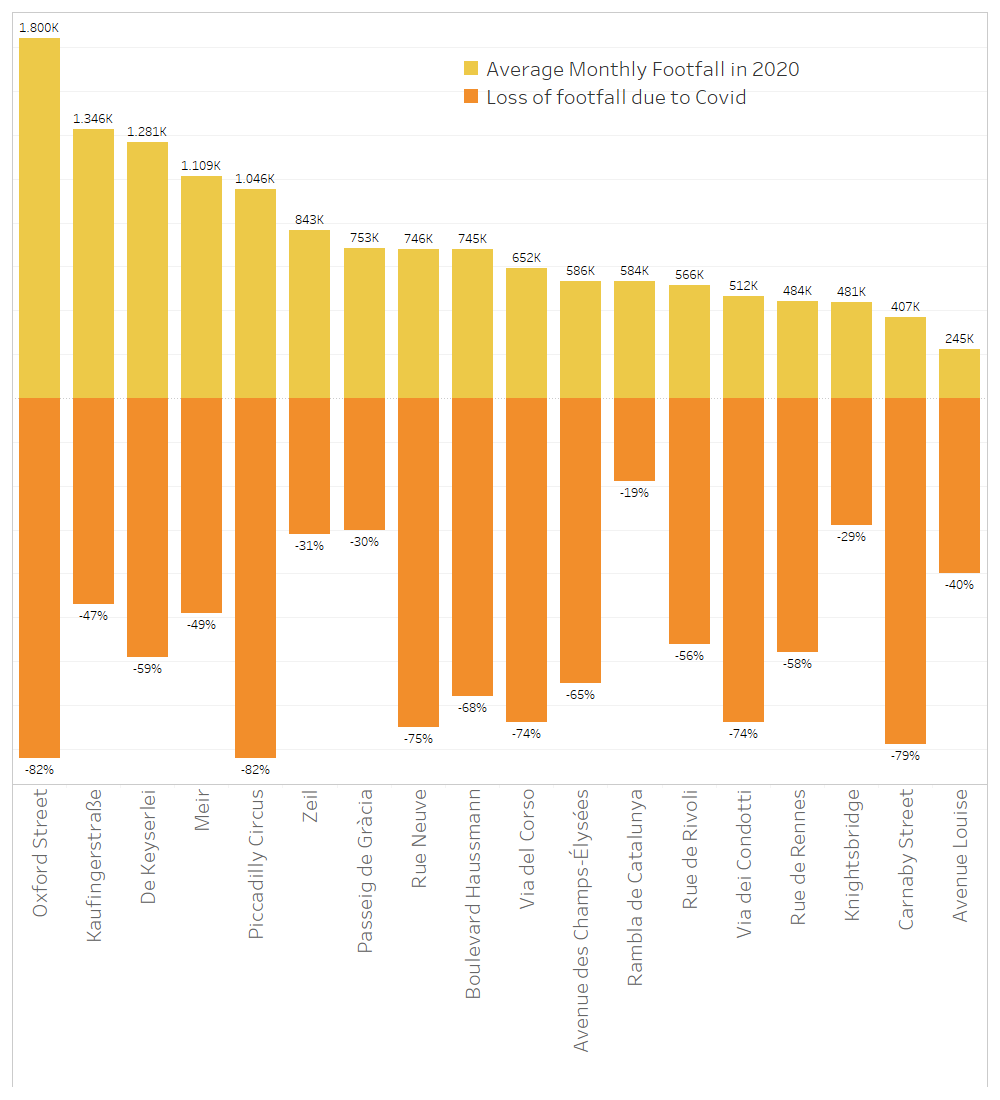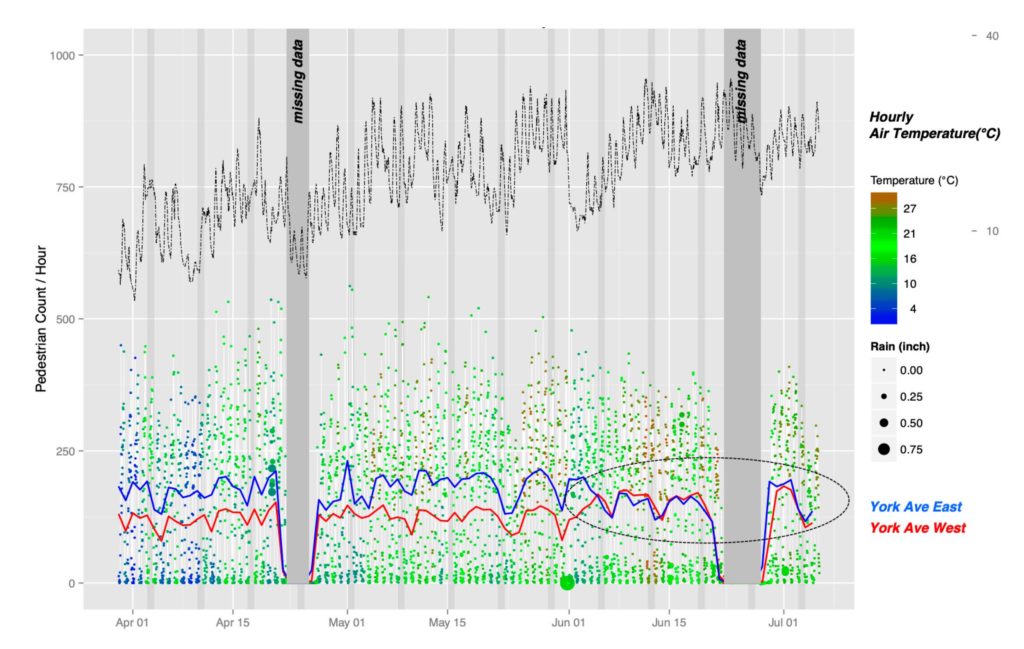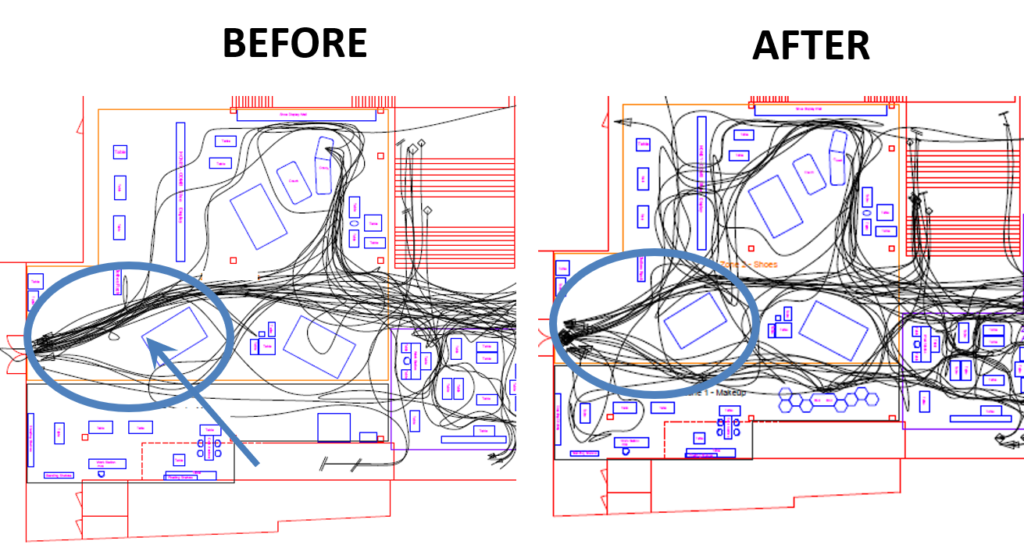How to choose the location of a store? This article proposes 6 rules to select the right location and configuration for your future sales outlet. We explain how to gain up to 50% more customers by choosing the right sidewalk, the effect of public transportation, the role of “locomotive” signs, and much more. And of course, if you would like advice on the ideal location, please visit our dedicated page and contact us.
6 rules to help you choose your commercial premises
- Choose the location of your sales outlet according to the presence in the immediate catchment area (200 meters maximum) of “locomotive” brands. Make sure that the customers of these brands correspond to the profile of your customers.
- Choose a store located on the sunny side of the street as a priority. The difference in traffic can vary by 50%.
- Locate within 100 meters of a public transit stop. If there is a transit stop in front of the sales outlet, check to see if the pedestrian flow is not impeded. The sidewalk should be wide enough, and the stop should be set back far enough from your store so that passers-by will want to look at it and stop.
- Choose the longest possible street-front storefront. Avoid locations at the entrance of shopping malls, especially if the window is in the direction of the pedestrian flow (the window would then be in the back of the pedestrians)
- Choose a corner location where the flows cross
- Avoid steps and stairs in your sales outlet. Each obstacle unconsciously reduces the desire to enter or explore the store, and the probability of purchase decreases accordingly.
Choose a location next to “locomotive brands”
The number of visitors to physical stores is falling—a drastic decline. You can mitigate the risk of seeing no one in your store by slipping into the footprint of locomotive brands.
When Galeries Lafayette decided to set up shop on the Champs-Elysées in 2018, some retail experts estimated that footfall on the avenue could jump by 20%.

However, we must be careful not to bet everything on these locomotives because this can be very costly in the event of a crisis. Look at the effect of Covid, for example. The graph above shows Europe’s iconic retail highways have had very different fates. While London’s Oxford Street was the busiest artery in Europe in 2020 (1.8m shoppers per month on average), its post-Covid footfall has plummeted by 82%. The most iconic retail streets are still far from their pre-crisis levels.
So being on a busy shopping street is not enough to be immune to all risks.
 Choosing the right sidewalk
Choosing the right sidewalk
The sunny side of the Champs-Elysées (even numbers) has 30% more traffic than the non-sunny side. In some projects that we realized for customers, we observed differences up to 50%. This sunshine logically influences prices per m². In 2017, on the Champs-Elysées, the shady side traded at 12,000 to 15,000€/m²/year. The sunny side was selling at 20,000€/m²/year.
Why such a difference? The reason is simple. The feeling of comfort for pedestrians increases with sunlight. Research in California showed that at least 50% of the pedestrians felt good walking in the sun, while it was rarely the case in the shaded areas.
In some latitudes, however, it is observed that pedestrians seek shade in the afternoon. This research realized in New York follows an inversion between the 2 sides of York Avenue from June.

Choose a one-level store with no stairs
Any obstacle placed between the store and the customer will invariably decrease the customer’s desire to enter and spend money. These can be steps (at the entrance or in the store) or imperceptible design details. In the case below that we handled for a high-end store, a display cabinet diverted all incoming traffic to one side and subconsciously prevented customers from heading to the right. We solved the problem using flow analysis, and the effects are spectacular (see below).

After modification (AFTER), the flow is divided equally between the 2 sides.
Here are some examples of obstacles frequently encountered when we visit sales outlets
- doors (even glass doors) in front of refrigerated cabinets (they reduce impulse purchases by 50 to 80%)
- steps to get from one area of the store to another (each step will also cost you money to provide access for the less able)
- out-of-reach products: the fewer people touch the products, the less they buy them. Use this research from La Samaritaine to bring customers closer to the products
 Pay attention to public transport
Pay attention to public transport
As an extension of the choice of the sidewalk, the presence of public transportation stops can also be a positive lever for a local business. The reason is apparent. Public transport stops lead to a concentration of pedestrians waiting for their bus, streetcar, … And concentration in front of your store also means more traffic.
But beware of exceptions to the rule:
- Not every type of business benefits from the presence of a public transport stop. The impulse shops (snack shops, for example) will benefit the most immediately.
- Pay attention to the width of the sidewalk: if the transit stop prevents traffic from entering the sidewalk, the opposite effect will be achieved. Passers-by will avoid the sidewalk, and your store will be penalized.
Beyond public transportation stops in front of your door, it is vital to ensure that your store is located in a well-served area. Keep in mind that it is essential to be in close proximity. Ideally, it would help if you always were located less than 100 meters from a streetcar, bus, or subway stop.

Pay attention to the size and orientation of the window
To sell well, you need to make passers-by want to buy. To make people want to buy, you need to have a suitable display space (the shop window). Even if it is possible to realize wonders in small spaces, a large surface is always an asset in local commerce.
The larger the window, the greater the mass effect and the greater the attention of passers-by. Also, make sure that the window is facing the street. This may seem obvious, but we’ve seen cases where customers have chosen locations at the entrance of a shopping mall with the window facing the direction of travel (so most pedestrians had the window at their back).
If you are looking for ideas on how to create windows that will draw in passers-by, here are some examples:

Favor a corner situation
Finally, we advise you to choose a corner store if possible. You will benefit from two complementary flows. Moreover, a store located at the corner of 2 streets benefits from better visibility and generally has more glass surface to expose its products.
Good luck in your search for the ideal location. Do not hesitate to contact us if you need help.
Posted in Marketing.

